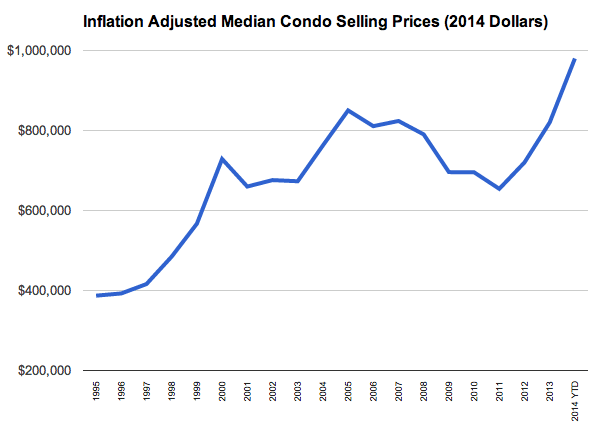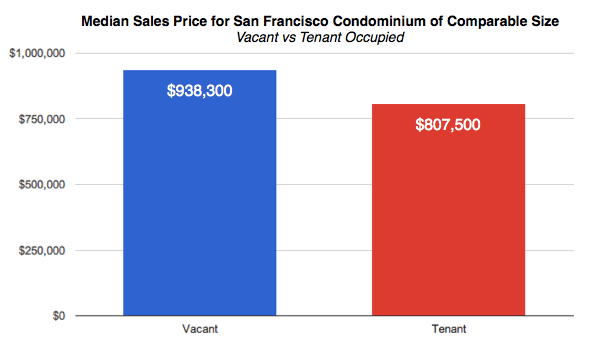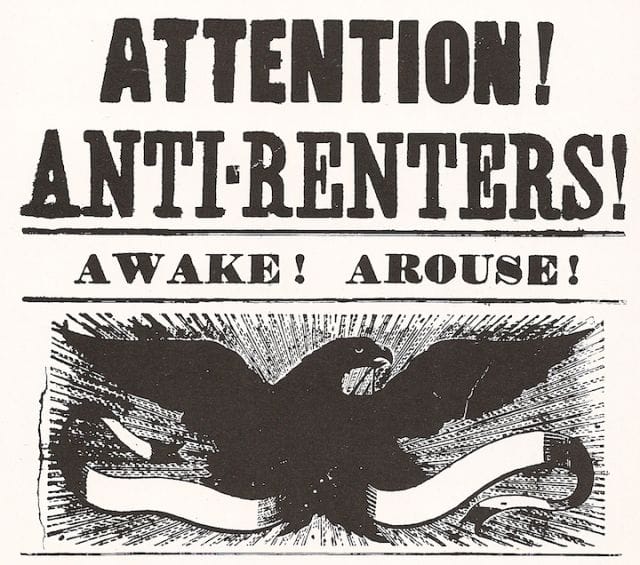A rent-controlled apartment may be the most coveted asset in San Francisco. While rents are increasing 30-40% per year in parts of the city, rent control limits increases to about 1% a year. Landlords grumble about this discrepancy, but rent control is a fixture of the market; the vast majority of apartments in the city have been rent-controlled for decades. The difference between the market rate and rent-controlled rate for many residents is several thousand dollars, which is real money that tenants save every month.
This “asset” isn’t exactly liquid though. You can’t sell your rental agreement to someone else who wants to live in your pad. Nor can you legally overcharge subtenants for the rent and pocket the profit (though this does happen). Living in a rent-controlled apartment can, however, result in a cash windfall on one occasion: if a landlord pays you to move out.
In these situations, landlords offer tenants with rent control cash to leave so they can either re-rent the place at a market rate or sell the apartment to buyers. These “tenant buyouts” are becoming increasingly popular as landlords seek to take advantage of the city’s real estate boom.
There has been a lot of press about these buyouts, but little analysis on what is the fair market price. The general range for buyouts, according to a lawyer familiar with the matter, is about $20,000 to $60,000. When one woman asked for $80,000, the landlord called it “blackmail.” (She ended up settling for $15K.) Under the Ellis Act, which allows landlords to evict tenants as long as they don’t rent out the property for at least five years, the owner is required to pay only $5,200 per tenant.
Are these buyouts a good deal for the tenants or the landlord? How much should a landlord be willing to pay a rent-controlled tenant to leave? According to our analysis, around $130,000.
Rent Control in San Francisco
This is a blog post about renegotiating a contract. The landlord and tenant both knowingly entered into a long-term contract in which they exchange housing for cash at a pre-determined rate. Now, because market rents are much higher than anticipated, it looks like the landlord signed a shitty deal. But such is life for a real estate investor.
This post is focused on how much a real estate investor should be willing to pay to get out of the shitty deal he or she signed. We proffer no opinion about whether rent control is good or bad. We simply accept it as a fact that both the landlord and tenants were aware of rent control before they signed a contract. Okay?
Rent control in San Francisco has been around since June 1979. Apartments built before then are subject to rent control and their prices can only increase at a rate roughly comparable to inflation. Apartments built after that date are not subject to rent control — neither are single family homes. There are more nuances to the laws that you can check out here.
Calculating the Cost of Rent Control to the Landlord
In San Francisco, the real estate market is booming. As we previously pointed out, rents have exploded. To state the obvious, buying a home is expensive too. In order to investigate home price data, we partnered with Polaris Pacific, a local firm that helps companies sell and price condominiums. Below is the median price of buying a condominium over the last two decades adjusted for inflation, according to Polaris Pacific’s data:

Source: Priceonomics analysis, Polaris Pacific
So, how can you calculate the maximum amount a landlord should pay his or her tenant to get out of the contract they signed? One way is to look at the difference between the current rent the tenant pays and the market rate, and then build a discounted cash flow model of how much more the landlord would make if he or she could reset the rents. That would be the most technically correct way, but it requires making many assumptions that are easy to mess up in a blog post. Luckily, there is an easier way. We need to answer the question: How much more do vacant apartments sell for versus ones with a rent-controlled tenant?
Polaris Pacific’s data set contains every single condominium transaction that happened over the last year. For each transaction, it notes whether the home is tenant-occupied or vacant at the time of the sale. The difference in price for real estate that is vacant versus tenant-occupied should tell you how much a landlord is willing to pay to get the place free of tenants. Just how big is that premium?
Let’s look at condominiums that were built before 1979 and therefore have rent control. In 2014 so far, there were 732 of these transactions. The median price of vacant units (it was previously landlord-occupied or the tenant moved out) is $1,025,000. Tenant-occupied real estate, however, is selling for a median price of $807,500.

Tenant-occupied places sell for $217,000 less than vacant ones! Tenant-occupied properties, however, tend to be 100 square feet smaller than vacant ones (many of which were previously occupied by the owners and are probably nicer). So let’s correct for this size-discrepancy. Vacant places sell for $875 per square foot compared to $752 for tenant-occupied ones, which is a difference of $122 per square foot. For a median-sized, tenant-occupied condo of 1,070 square feet, the price gap comes out to:

The tenant-occupied unit sells for about $130,000 less than the vacant one, so that is the maximum amount landlords should be willing to pay to get out of their contract. We have our answer. By extricating themselves from their rental arrangement, all else equal, landlords can make around $130,000 more when they sell a property.
Conclusion
So, on average, if you have a rent-controlled apartment and the landlord wants to buy you out, here’s the formula to calculate the maximum a landlord would be willing to pay you: Take the square footage of your apartment and multiply it by $122, which is the premium the landlord would earn selling the apartment if it was vacant. The amount a landlord should be willing to pay will be higher than this amount if your rent is substantially below the market rate, and lower if it’s only a little below the market rate.
So, will you be offered a $130,000 buyout offer from your landlord? Well, that’s a negotiation between you and your landlord. Now you have the data to make your case.
This post was written by Rohin Dhar. Follow him on Twitter. To get occasional notifications when we write blog posts, sign up for our email list.





